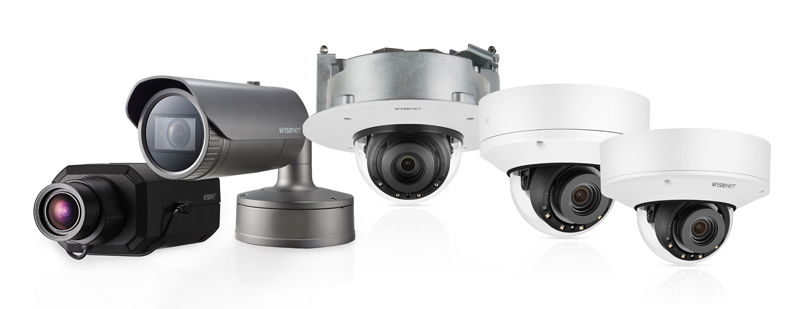 Uri Guterman, Head of Product & Marketing for Hanwha Techwin Europe, champions the use of the DORI standard as the starting point for designing a video surveillance system and how in doing so, you can ensure that the specified cameras are able to cost-effectively meet the end-user’s expectations.
Uri Guterman, Head of Product & Marketing for Hanwha Techwin Europe, champions the use of the DORI standard as the starting point for designing a video surveillance system and how in doing so, you can ensure that the specified cameras are able to cost-effectively meet the end-user’s expectations.
The quality of the images which can be captured by many of the latest generation of super-high definition video surveillance cameras are simply breathtaking, allowing users to see ultra-sharp detail of objects and people within the field of view. The resolution capabilities of 4K and 8K cameras, for example, enables operators to digitally zoom in to see a non-pixelated image of just a very small part of a scene, making them an ideal solution for large open area applications where installing multiple cameras may be impractical or cost prohibitive.
The deployment of ultra-high resolution cameras, however, comes at a price in that they all capture large file size images which, when transmitted over the network, consume large amounts of bandwidth. They also have large data storage requirements.
Some manufacturers have developed proprietary compression technologies which, when working in conjunction with H.265 compression, are able to reduce bandwidth and storage demands by up to 80%. It is, however, still wise for system designers to question if it is really necessary to specify the highest resolution camera available, bearing in mind the higher initial capital cost, as well as ongoing network and storage requirements, even if they are reduced by complementary compression technology.
Let DORI help you specify the ideal camera
The phrase ‘horses for courses’ comes to mind when thinking about what system designers need to take into consideration when deciding on the best camera model for each location and objective. In this respect, the design of the system must obviously reflect the finding of the risk assessment and take into account an end-user client’s operational requirements. They may, for example, need to capture high quality, evidence grade images which will identify an individual or just wish to be able to verify an intruder alarm event.
Whilst many system integrators will be familiar with DORI, installers who are relatively new to the world of video surveillance, may perhaps not know that the IEC EN62676-4 international standard provides time saving guidance as to which cameras should be specified. So for those who are not familiar with the standard, here is a jargon busting overview of what the DORI acronym stands for.
- Detection: The quality of images captured by a camera allows a user to determine whether a person or vehicle is present.
- Observation: The captured images are able to provide characteristic details of an individual, such as their clothing.
- Recognition: The clarity of the images enables operators to see with a high level of certainty that an object or incident is the same as the one that an operator has seen before, e.g. it is a person, vehicle or a fire.
- Identification: The resolution and quality of the images enable an individual to be identified beyond reasonable doubt.
The sensitivity of the camera sensors used by different camera manufacturers can vary and in this respect Hanwha Techwin’s online Toolbox Plus enables system integrators to compare the specifications of its Wisenet cameras side-by-side and then compile a list of the products required for a specific project. There is also the added benefit of be able to generate a report on the estimated bandwidth and storage requirements for the project.
It seems almost too simple, but using DORI as a guide for designing a new video surveillance solution, will ensure you do not waste money by over specifying the cameras needed for the job in hand. Equally important, the reverse also applies in that the DORI standard will help you avoid experiencing ‘buyers’ remorse’ as a result of installing cameras which are not fit for purpose.
As always, the best advice is therefore to work with manufacturers you believe you can trust and ask them to confirm that you have made the correct camera choice.
Do you have some questions about DORI? Email Uri Guterman here

